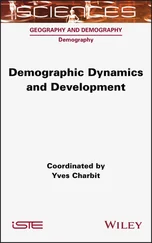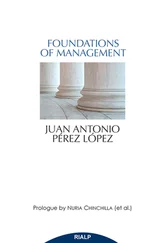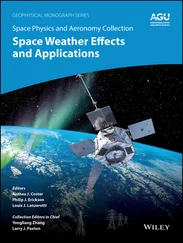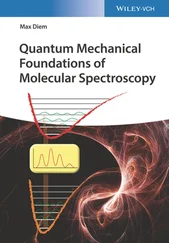Ashish Tewari - Foundations of Space Dynamics
Здесь есть возможность читать онлайн «Ashish Tewari - Foundations of Space Dynamics» — ознакомительный отрывок электронной книги совершенно бесплатно, а после прочтения отрывка купить полную версию. В некоторых случаях можно слушать аудио, скачать через торрент в формате fb2 и присутствует краткое содержание. Жанр: unrecognised, на английском языке. Описание произведения, (предисловие) а так же отзывы посетителей доступны на портале библиотеки ЛибКат.
- Название:Foundations of Space Dynamics
- Автор:
- Жанр:
- Год:неизвестен
- ISBN:нет данных
- Рейтинг книги:3 / 5. Голосов: 1
-
Избранное:Добавить в избранное
- Отзывы:
-
Ваша оценка:
Foundations of Space Dynamics: краткое содержание, описание и аннотация
Предлагаем к чтению аннотацию, описание, краткое содержание или предисловие (зависит от того, что написал сам автор книги «Foundations of Space Dynamics»). Если вы не нашли необходимую информацию о книге — напишите в комментариях, мы постараемся отыскать её.
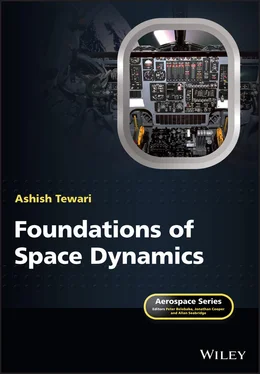



 particles,
particles,
 being the location of the test mass ,
being the location of the test mass ,  , in an inertial reference frame, ( OXYZ ), and
, in an inertial reference frame, ( OXYZ ), and  being the location of the centre of mass of the attracting body consisting of the remaining
being the location of the centre of mass of the attracting body consisting of the remaining  particles, which are located at
particles, which are located at  . If it is further assumed that the test mass is negligible in comparison with the combined mass of the remaining
. If it is further assumed that the test mass is negligible in comparison with the combined mass of the remaining  particles constituting the body, that is,
particles constituting the body, that is,  , then the test mass,
, then the test mass,  , causes a negligible acceleration on the body. Consequently, the body can be assumed to be at rest, and the origin of the inertial reference frame, OXYZ , is moved to the centre of mass of the body, i.e.,
, causes a negligible acceleration on the body. Consequently, the body can be assumed to be at rest, and the origin of the inertial reference frame, OXYZ , is moved to the centre of mass of the body, i.e.,  ,
,  , and
, and  . Hence, the equation of motion of the test mass becomes the following:
. Hence, the equation of motion of the test mass becomes the following:
 or
or  equals 1, we have
equals 1, we have

 as follows:
as follows:
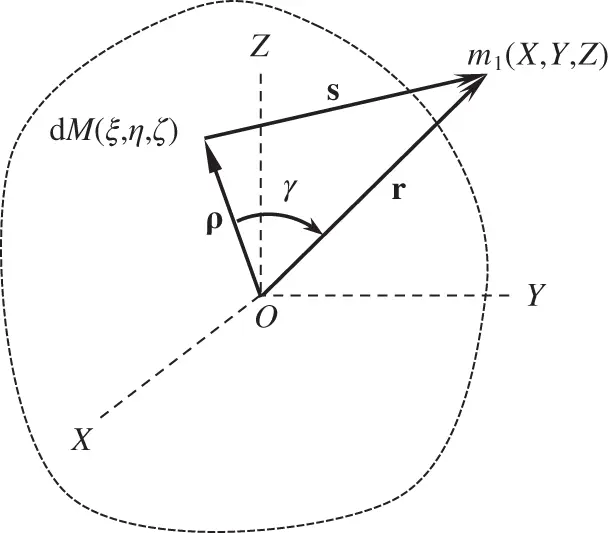
 , of a body with centre of mass O , and a test mass,
, of a body with centre of mass O , and a test mass,  , located away from the body.
, located away from the body. particles constituting the mass, M , of the attracting body, let the limit of an infinitesimal elemental mass ,
particles constituting the mass, M , of the attracting body, let the limit of an infinitesimal elemental mass ,  , be taken as
, be taken as  , whereby the summation in Eq. (2.71)is replaced by the following integral:
, whereby the summation in Eq. (2.71)is replaced by the following integral:

 , from the elemental mass,
, from the elemental mass,  , as depicted in Fig. 2.4, and can be expressed as follows:
, as depicted in Fig. 2.4, and can be expressed as follows:
 and
and  being the position vectors of the test mass,
being the position vectors of the test mass,  , and the elemental mass,
, and the elemental mass,  , respectively, from the centre of mass of the attracting body, and
, respectively, from the centre of mass of the attracting body, and  , being the angle between
, being the angle between  , and
, and  as shown in Fig. 2.4.
as shown in Fig. 2.4.
